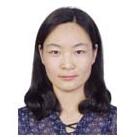Invited Speaker-----Dr. Huili Zhang

Associate professor, School of Life Science and Technology, Beijing University of Chemical Technology, China.
Speech Title: Selection of Particles for a Circulation Loop in Solar Energy Capture and Storage
Abstract: The solar tower plant (STP) falls under the category of point-focusing concentrated solar power systems where irradiation is focused on a heat exchanger mounted high on a central positioned solar tower surrounded by a ground-based field of mirrors called heliostats. Thermal energy is transfered to a heat transfer fluid (HTF) flowing in the heat exchanger. Possible HTFs are thermal oils, molten salts and particle suspensions. Operating temperatures and heat storage capacities of the HTFs are crucial for the efficiency of the plant. The captured heat is stored and subsequently used in a thermodynamic cycle which is mostly an air or water-steam turbine cycle to generate electric power. Heat losses at the focusing point are minimized with all the thermal energy is focused on 1 point. A solar tower plant can hence achieve higher temperatures then Parabolic Trough Collector (PTC) and Linear Fresnel Collector (LFC). HTFs are used to capture, convey and store the heat. Common HTFs used are molten salts or thermal oil. These fluids have a limited operating temperature which decreases the efficiency of a turbine. New research looking into the use of particle suspensions is promising. Particles have a similar heat capacity as molten salts but without temperature limitation during process conditions as is the case for thermal oils which face problems of coking and decomposition, and molten salts which solidify at 220 °C and decompose at 600 °C. The operating temperature where using particles exceeds 800 °C and is only limited by the construction materials used in the system. The advantages of the particulate solar tower design could make it possibly the preferred Concentrated Solar Power (CSP) technology in the near future. The higher temperatures obtained improve the efficiency of the air-Brayton or steam cycle turbines., whereas the higher process temperature implies a higher energy density and hence the possibility to store thermal energy over a longer period of time at the same cost. This makes the STP more reliable to deliver a continuous energy output 24 hours a day and also lowers the energy producing cost. These advantages and the ongoing research for higher temperature HTFs to boost turbine efficiencies, make STPs gain an increasing market share over the previous dominating PTC.
The presentation and paper will define and assess the selection criteria for suitable particle materials to be used in an upflow bubbling fluidized bed (UBFB) or dense up-flow powder circulation system in solar energy capture and storage systems. The main criteria identified are based on thermophysical and thermomechanical properties, on the attrition behaviour, and consider health and environmental hazards of the candidate powders. Finally, a cost comparison and tentative ranking of the different candidate powders will be presented.
Keywords: Concentrated solar power, Particle suspension, Selection, Properties

